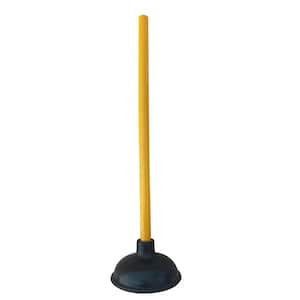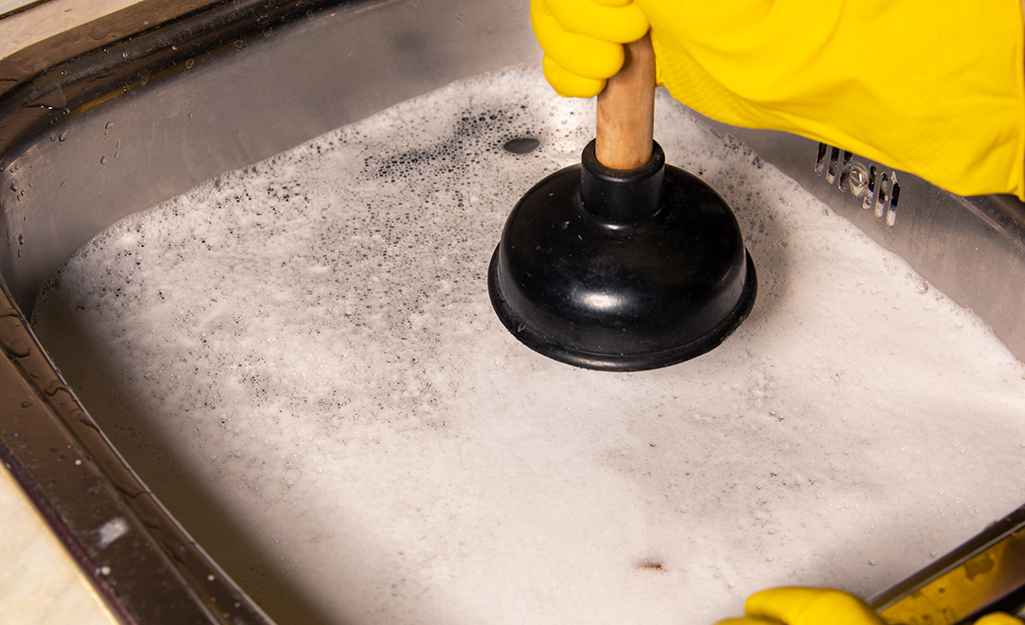How to Perfect Plunger and Drain Cleaners: Specialist Advice
How to Perfect Plunger and Drain Cleaners: Specialist Advice
Blog Article
Right here in the next paragraphs you might get lots of high-quality news related to How to Unclog Your Sink with a Plunger.

Introduction
Correct maintenance of home drains pipes is crucial for stopping blockages and guaranteeing smooth water flow. One of the secret devices in every homeowner's toolkit is the bettor, along with different drainpipe cleaners created to tackle persistent blockages effectively. This post discovers how to utilize bettors and drainpipe cleansers successfully to keep your drains pipes flowing easily.
Section 1: Understanding Plungers
Sorts of Plungers
There are a number of sorts of bettors readily available, each made for various kinds of drains pipes and clogs. The most common kinds include mug bettors, flange bettors, and accordion plungers.
How Plungers Work
Plungers service the concept of developing stress and suction to remove obstructions. When correctly applied over a drain, they produce a vacuum that can take out debris or separate obstructions.
Choosing the Right Bettor
Choosing the best plunger depends on the type of drain and the nature of the obstruction. Mug bettors are ideal for sinks and tubs, while flange bettors are better fit for toilets because of their style.
Typical Mistakes with Plungers
Preventing these mistakes guarantees effective plunging: improper seal around the drainpipe, inadequate pressure, and not clearing surrounding debris.
Section 2: Using Plungers Efficiently
Prep work
Prior to plunging, make sure the bettor covers the drainpipe completely and forms a tight seal. Clear any kind of visible particles around the drainpipe opening.
Technique
Beginning with mild plunging movements to construct suction. Boost pressure slowly, using a steady rhythm. Repeat as needed till the drainpipe removes.
Fixing Tips
If diving does not function, try readjusting the seal, applying oil jelly for a far better seal, or utilizing a various type of plunger.
Area 3: Understanding Drainpipe Cleaners
Types of Drain Cleaning Company
Drain cleansers can be chemical or chemical. Chemical cleaners utilize strong chemicals to liquify clogs, while chemical cleansers utilize natural enzymes to break down organic matter.
Just How Drainpipe Cleaners Job
Chemical cleaners react with obstructions to liquify them, while chemical cleansers break down natural products like hair and oil without damaging pipelines.
Safety and security Factors to consider
Constantly wear gloves and eye defense when utilizing chemical drainpipe cleansers. Ensure appropriate ventilation and comply with manufacturer instructions meticulously.
Eco-Friendly Alternatives
Consider using vinegar and baking soda or enzyme-based cleansers for environment-friendly choices that are safer for pipes and the atmosphere.
Area 4: Using Drain Cleansers Properly
Application Techniques
Pour chemical cleaners directly right into the drain opening. Enable them to benefit the recommended time before flushing with hot water. Chemical cleaners should sit overnight.
Preventative measures
Prevent mixing different kinds of cleaners, as this can generate hazardous fumes. Never make use of chemical cleansers along with a bettor, as splashing can take place.
Handling Stubborn Obstructions
For relentless obstructions, take into consideration making use of a pipes snake or calling an expert plumbing to avoid damage to pipelines.
Verdict
Finally, recognizing just how to utilize bettors and drainpipe cleansers properly is crucial for keeping healthy plumbing systems. By selecting the right devices and techniques, house owners can take on small clogs and prevent significant plumbing concerns down the line.
How To Properly Use A Plumbing Snake To Clear Drains
When any drain clogs in our home arise, we tend to gravitate toward the plunger and little else. In cases where the plunger and its vacuum-created pressure are not able to clear clogs, many immediately move to harmful chemicals or simply call their plumber to fix the issue.
we’re happy to help with all drain cleaning needs and concerns. This includes informing you on a few other home remedies you may have at your disposal for minor to moderate clogs, one of which is the use of a plumbing snake. Many people have never used one of these before – let’s go over the steps to take when your drain clogs and you have a plumbing snake available.
Attempt Plunger Use
The first step here, as we noted above, should indeed be to grab your plunger when you notice a drain clog and attempt to resolve it this way. If you’re unsure how to use a particular type of plunger, our plumbers can answer any questions you have. If this doesn’t do the trick, however, you move on to the snake.
Locate And Prepare Snake
A plumbing snake is a metal or plastic device that’s generally about a quarter of an inch thick. It’s design with significant extensions, meant to reach down into your clogged drain and push the clog out. Snakes also contain drain augers that will latch onto and push stubborn blockages.
If your plunger doesn’t clear a clog, locate your snake and bring it to the drain in question. We also recommend keeping a bucket nearby to collect the clog once you pull it out, plus we’d advise wearing goggles and possibly protective gloves.
Feed Snake
Once you’re ready to go, feed the snake slowly down the drain, using the crank device it comes with to keep it moving until it finds the clog. Once this happens, much of the clog will be latched onto the coil so you can pull it out, while the rest will simply break up and flow downward.
Detach Debris
Remove the snake slowly from the drain, and once you’ve done so, pick off any debris that’s stuck to the coil. This is another area where wearing gloves is a must.
Flush Drain
Finally, take a few minutes to ensure the snake has done its job correctly. If you’ve been using it on a toilet, flush the toilet a couple times and make sure everything flows well. If you’ve used it on a different drain, flush it with some room temperature water.
https://www.mybuddytheplumber.com/blog/how-to-properly-use-a-plumbing-snake-to-clear-drains/

Application Techniques
Pour chemical cleaners directly right into the drain opening. Enable them to benefit the recommended time before flushing with hot water. Chemical cleaners should sit overnight.
Preventative measures
Prevent mixing different kinds of cleaners, as this can generate hazardous fumes. Never make use of chemical cleansers along with a bettor, as splashing can take place.
Handling Stubborn Obstructions
For relentless obstructions, take into consideration making use of a pipes snake or calling an expert plumbing to avoid damage to pipelines.
Verdict
Finally, recognizing just how to utilize bettors and drainpipe cleansers properly is crucial for keeping healthy plumbing systems. By selecting the right devices and techniques, house owners can take on small clogs and prevent significant plumbing concerns down the line.
How To Properly Use A Plumbing Snake To Clear Drains
When any drain clogs in our home arise, we tend to gravitate toward the plunger and little else. In cases where the plunger and its vacuum-created pressure are not able to clear clogs, many immediately move to harmful chemicals or simply call their plumber to fix the issue.
we’re happy to help with all drain cleaning needs and concerns. This includes informing you on a few other home remedies you may have at your disposal for minor to moderate clogs, one of which is the use of a plumbing snake. Many people have never used one of these before – let’s go over the steps to take when your drain clogs and you have a plumbing snake available.
Attempt Plunger Use
The first step here, as we noted above, should indeed be to grab your plunger when you notice a drain clog and attempt to resolve it this way. If you’re unsure how to use a particular type of plunger, our plumbers can answer any questions you have. If this doesn’t do the trick, however, you move on to the snake.
Locate And Prepare Snake
A plumbing snake is a metal or plastic device that’s generally about a quarter of an inch thick. It’s design with significant extensions, meant to reach down into your clogged drain and push the clog out. Snakes also contain drain augers that will latch onto and push stubborn blockages.
If your plunger doesn’t clear a clog, locate your snake and bring it to the drain in question. We also recommend keeping a bucket nearby to collect the clog once you pull it out, plus we’d advise wearing goggles and possibly protective gloves.
Feed Snake
Once you’re ready to go, feed the snake slowly down the drain, using the crank device it comes with to keep it moving until it finds the clog. Once this happens, much of the clog will be latched onto the coil so you can pull it out, while the rest will simply break up and flow downward.
Detach Debris
Remove the snake slowly from the drain, and once you’ve done so, pick off any debris that’s stuck to the coil. This is another area where wearing gloves is a must.
Flush Drain
Finally, take a few minutes to ensure the snake has done its job correctly. If you’ve been using it on a toilet, flush the toilet a couple times and make sure everything flows well. If you’ve used it on a different drain, flush it with some room temperature water.
https://www.mybuddytheplumber.com/blog/how-to-properly-use-a-plumbing-snake-to-clear-drains/

Do you enjoy reading up on How to Use a Plunger to Unclog a Toilet or Drain? Leave a review further down. We'd be happy to know your views about this blog entry. We hope to see you back again in the future. Please take the time to distribute this page if you liked it. Thanks so much for going through it.
Call Today Report this page